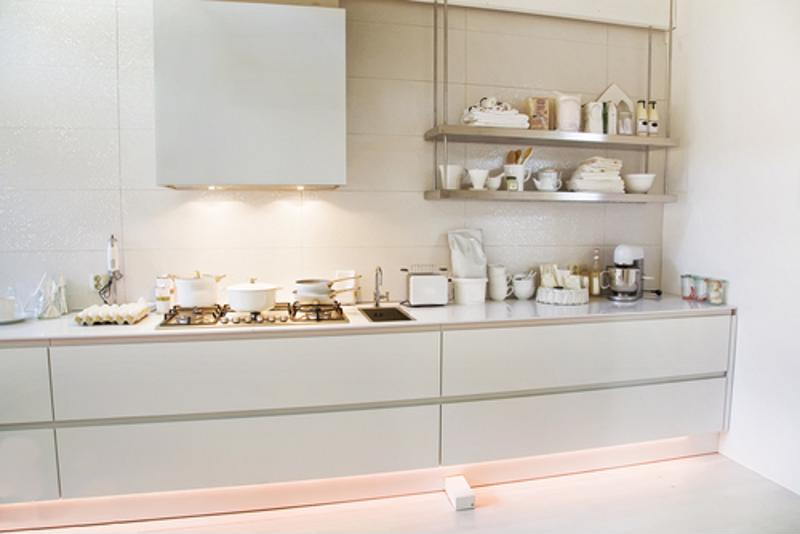
LED lights give homeowners plenty of energy-efficient lighting options.
Technology in home lighting has greatly advanced in the last decade. Now, there are plenty of options that not only save you money in the long run, but help the environment as well.
With the new technology in LED lighting, these light bulbs can last drastically longer than an incandescent bulb. In fact, an LED light bulb can last a decade or so before needing to be replaced. That comes out to 10 times more efficient than even compact florescent light bulbs.
LEDs will also drastically reduce the energy needed to light your home compared to incandescent bulbs. LEDs produce 3.4 British thermal units per hour, which is far less than the 85 Btu/hour for incandescent bulbs. LEDs require less heat to generate light, while older bulbs can get extremely hot. The hotter a bulb gets, the more energy it will use, which means LEDs use a fraction of the amount of total energy used by other bulbs.
How LED light bulbs play into your interior design
While LEDs are obviously the perfect choice to save money and reduce energy, these bulbs also have many benefits for home lighting designs. LEDs are known for generating directional light, which is different than an incandescent bulb that spreads light more spherically. With the new GE Branded Enbrighten® line of lighting, you can experience both the smooth evenly distributed light and the added energy efficiency.
 LEDs work perfectly with under cabinet and recessed light fixtures.
LEDs work perfectly with under cabinet and recessed light fixtures.Task lighting functions are a benefit of direct lighting. Under cabinet lights, recessed lights or even study lamps are all perfect for LEDs and their directional light. With under cabinet lights, you get direct light to your counters, which makes prepping food and other work in the kitchen much easier. GE Enbrighten under cabinet fixtures reduce hot spots and provide a smooth, warmly lit surface without all of the shadows that result from other LED under cabinet lights.
Additionally, recessed lighting designs are growing in popularity for homes. With these designs, you can spread the light more evenly across a room instead of having a single pendant or flush fixture in the room. Some people don't like recessed lights because they are hard to reach to replace the bulb. However, with LEDs, you're looking at replacing bulbs every 10 to 12 years compared to every six months with incandescent bulbs.
Outdoor lighting options
Another benefit to energy-efficient lighting is you can use it for outdoor lighting. Whether it's security lights or a simple wall sconce fixture at your front door, LEDs can keep your house illuminated through the night without wasting energy.
Also, LEDs are extremely durable compared to incandescent light bulbs, which means they can withstand the cold or hot temperatures outside. Even CFL lights can work in negative 20-degree weather, while incandescent light bulbs aren't recommended to use below 40 degrees.
LED color temperature
LED bulbs provide white light in various shades: bright white, like a blue-tinted fluorescent tube; soft white, like a yellow-tinted incandescent light; and daylight, a bright light mainly used for security purposes. The type and shade of light is measured in a temperature rating known as Kelvin (K), which measures the degree of red and blue in the light. The higher the color temperature means more blues light; the lower the color temperature means more reds. Most people prefer what is called warm white light in their homes, which is usually around 3000k. (Traditional incandescent bulbs are around 2700k.)
Unless you live in a disco, you probably want the colors in your home to look somewhat traditional. This is where the color rendering index, or CRI, comes in. The CRI is a score from 1 to 100 that indicates how accurately an object’s natural color will appear when illuminated by a particular light source. The CRI score can be a great way to tell a good LED from a great LED. The majority of leading LEDs in the market today score near the low to mid 80s on the scale. However, GE Enbrighten lights have a score of 98 CRI.
Another popular feature in LED lighting is the ability to dim lights to adjust the brightness with a home automated lighting system and dimming switches. Investing in a home lighting automation system will help you take control of your lights and save even more money over the long run. It is important to note that not all dimmers are designed to work with LEDs, so make sure to buy something specifically engineered to work with LED lights like Jasco’s GE branded Z-Wave and ZigBee Smart Dimmers.

